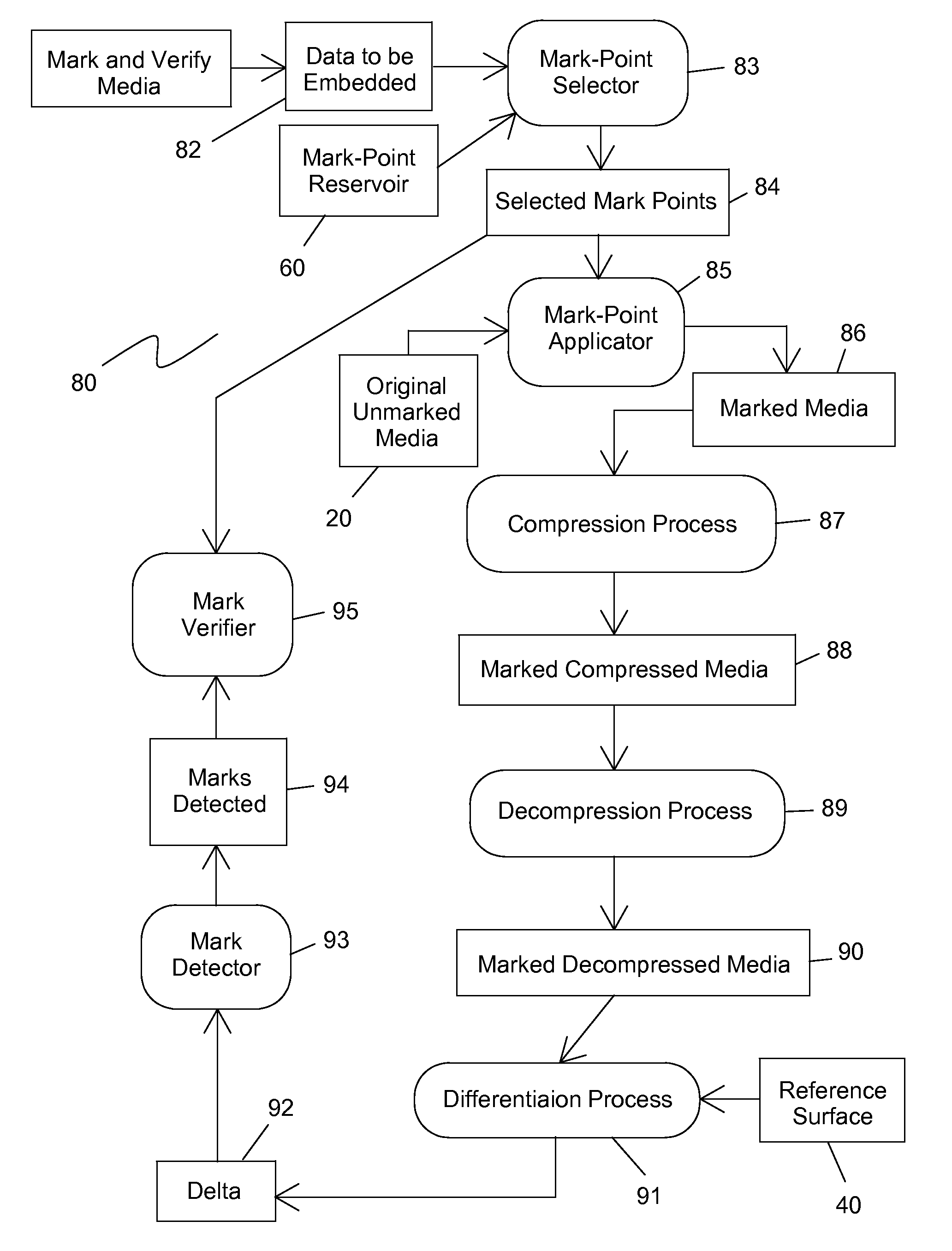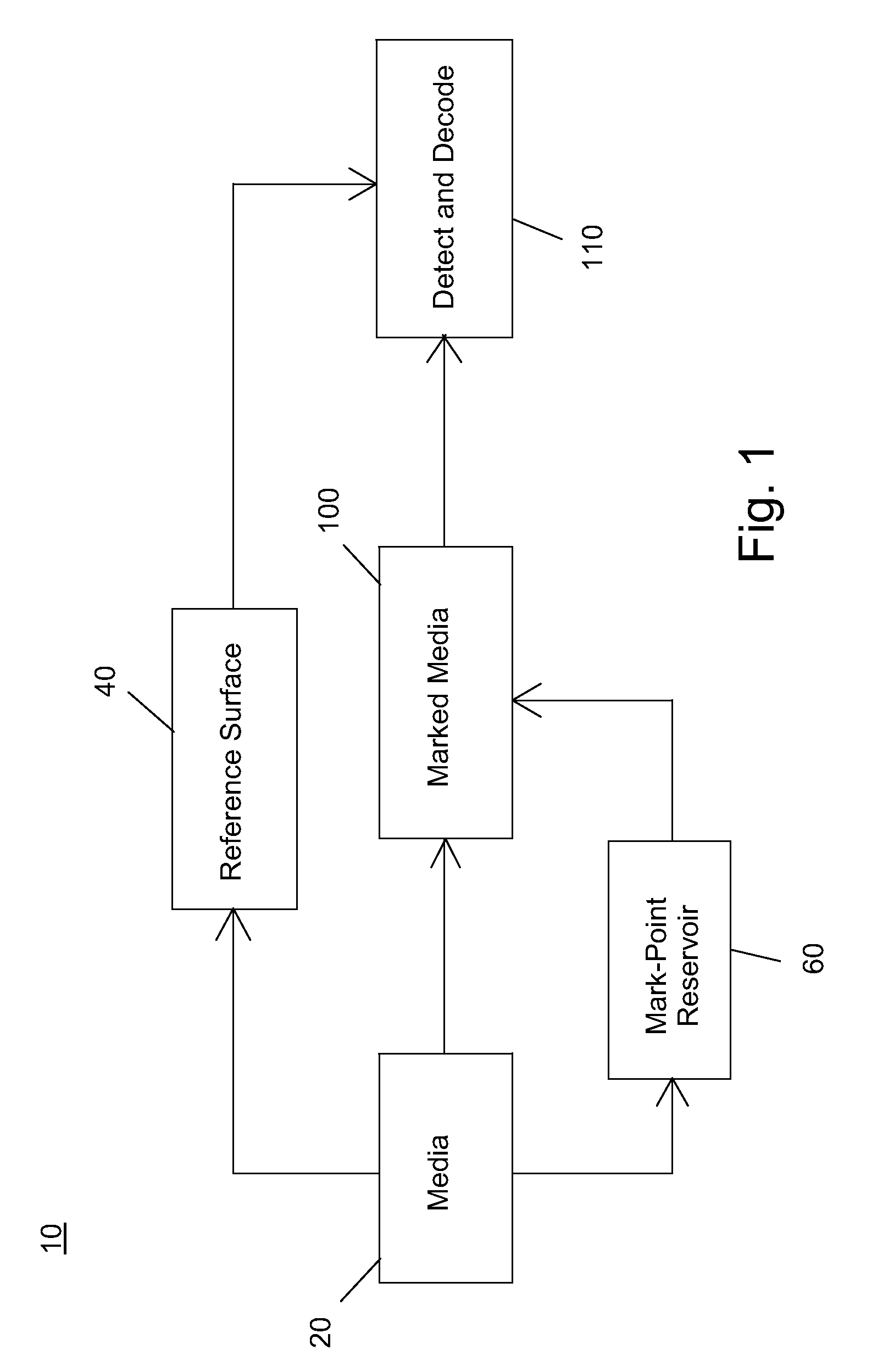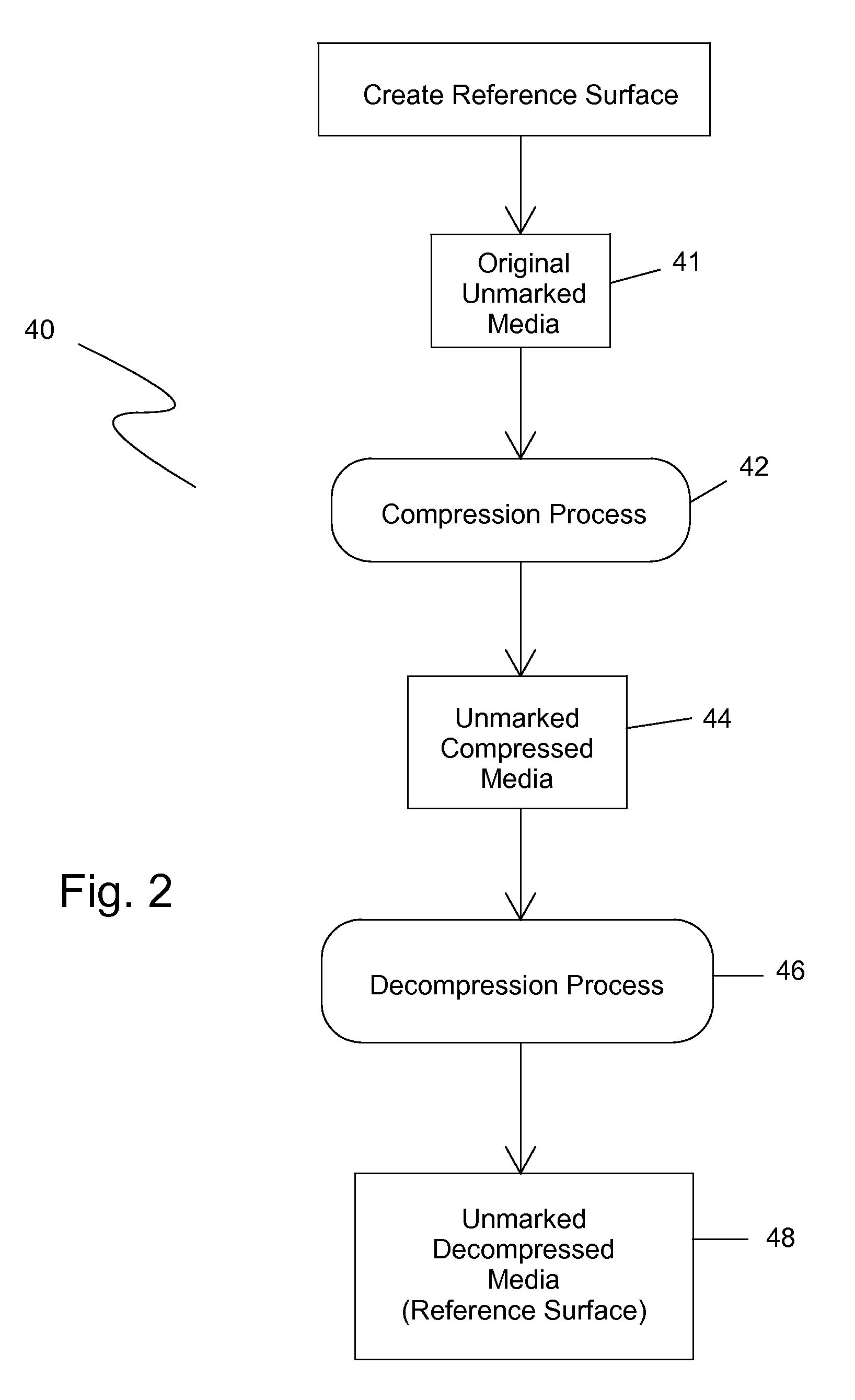Digital differential watermark and method
a watermark and digital technology, applied in the field of digital steganography, can solve the problems of easy loss of hidden data if the medium is encoded, unrecoverable embedded information, and limited data that can be effectively hidden in a given medium
- Summary
- Abstract
- Description
- Claims
- Application Information
AI Technical Summary
Benefits of technology
Problems solved by technology
Method used
Image
Examples
example 1
[0056]Mp3 files were encoded at 128 bits per second as the lossy-compression media format, and WAV files with 16-bit integer samples at 44.1 KHz as the uncompressed media format. The LAME mp3 encoder version 3.92 MMX was used to compress and decompress the test files. The system was tested with noise reference files, one 30-second music audio file, and one 90-second music audio file. Typical encoding rates were in the range of 4-5 bits per second. Eight-bit alphanumeric encoding was used to represent the target data to be embedded, which was a character string provided as input.
[0057]Marks are constructed by altering the magnitude and / or phase of a frequency bin in a representation of the audio spectrum produced by a Fast Fourier Transform (FFT) operation. The FFTW library was used for FFT functions. The FFTW library used in this example was obtained at that time from http: / / www.fftw.org / . It should be noted that the method is independent of the FFT library used. In fact, alternate ...
PUM
 Login to View More
Login to View More Abstract
Description
Claims
Application Information
 Login to View More
Login to View More - R&D
- Intellectual Property
- Life Sciences
- Materials
- Tech Scout
- Unparalleled Data Quality
- Higher Quality Content
- 60% Fewer Hallucinations
Browse by: Latest US Patents, China's latest patents, Technical Efficacy Thesaurus, Application Domain, Technology Topic, Popular Technical Reports.
© 2025 PatSnap. All rights reserved.Legal|Privacy policy|Modern Slavery Act Transparency Statement|Sitemap|About US| Contact US: help@patsnap.com



